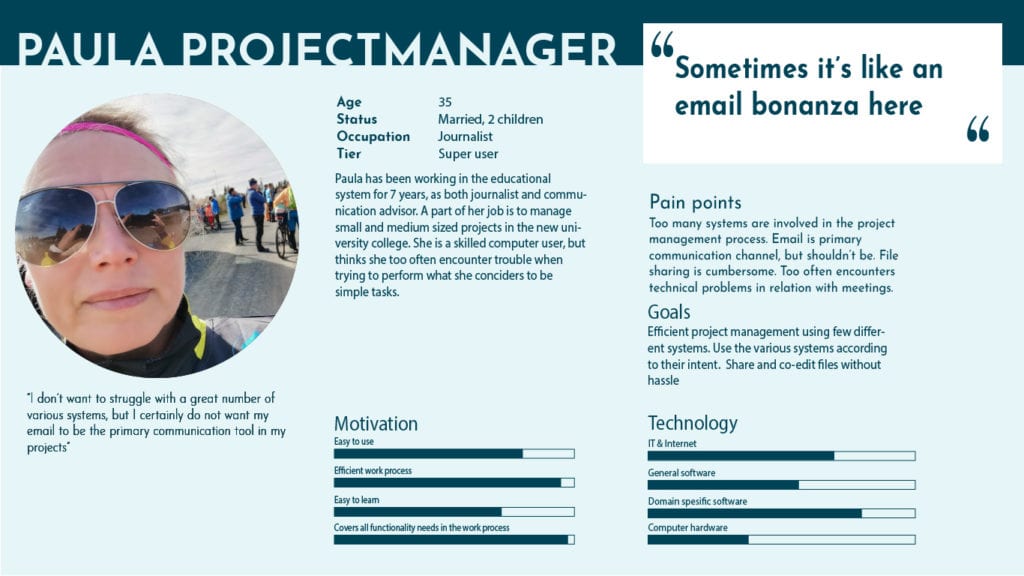Whenever you are developing a product, service or digital platform for somebody, it is important to know who you are creating it for. There is always an ideal customer, a customer you want to reach, the customers that already uses your services og products. These people has various needs – both for how to communicate with them, where to communicate and what message you provide. These persons can be summarized in a Persona. A persona is a fictious person, yet grounded in user research. The concept was developed by Alan Cooper. Cooper described the persona as a “hypothetical archetypes of actual users”. Cooper further describes personas as fictional, yet defined with “significant rigor and precision”containing their names, a picture, some personal details and goals. The personal details in a persona are derived from research and analysis.
«If you want to design software-based products that make people happy, you have to know who those people are with some precision. That is the role that personas play» Cooper, 1999
According to both Cooper and other researchers, the usage of Persona has several purposes:
- 1) a tool for invoking user empathy
- If we develop for real people, with real user goals and needs as basis, the chances are higher of succeeding
- 2) a tool to create clear focus on the user and user-goals
- You are not your users, and even though you like/dislike a feature, it is not you who decide
- 3) a communication tool
- We do not speak of “the user”, but “Bob” or “Paula”, a person with hopes, dreams, goals and frustrations
- 4) a tool for preventing user stereotyping and finally
- When the persona is based on user research, our own assumptions and biases has less chance of affecting the planning and development
- 5) a tool for guiding design decisions and evaluating design ideas
- When asking “will Paula like this feature” or “does Bob need this functionality”, the chances are higher of developing a product or service that the world’s Paulas and Bobs will use
This persona is developed for a real client of mine, a medium sized firm that heavily rely on email in their project management communication. Many of the project managers complain about a clear communication tool when working with projects.
In the profile, I have included demographics such as name, age, relationship status, occupation and her tier of computer skills. I have also included a quote and a section of pain points and goals.
A slider displays Paula’s motivation and skills on a likert scale. The goal of the description is to make Paula life-like, so that when asking “will Paula like this feature”, it feels like talking about a real person.

Not every persona is created equal, as they are project dependent. In other projects, other types of description might be needed.
Many years ago I wrote an essay about Personas, during my master studies in Interaction design at Gjøvik University College (now NTNU Gjøvik). The goal of the essay was to look at Alan Cooper’s description of the concept and see how this descriptin matched the real world implementation of the use of Personas. The conclusion back then was that the practice in real world projects does not always align with this. In some real world projects, the anticipated user empathy occur, while in others this empathy is absent for many different reasons.
For those interested: Personas. Theory versus practice (2014). I am not sure if this is the final version, but I cannot find any other.



